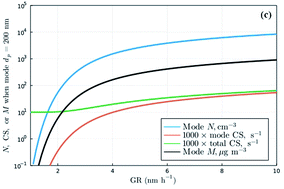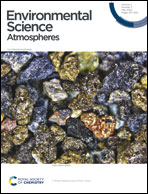The contribution of new particle formation and subsequent growth to haze formation
Abstract
We investigated the contribution of atmospheric new particle formation (NPF) and subsequent growth of the newly formed particles, characterized by high concentrations of fine particulate matter (PM2.5). In addition to having adverse effects on visibility and human health, these haze particles may act as cloud condensation nuclei, having potentially large influences on clouds and precipitation. Using atmospheric observations performed in 2019 in Beijing, a polluted megacity in China, we showed that the variability of growth rates (GR) of particles originating from NPF depend only weakly on low-volatile vapor – highly oxidated organic molecules (HOMs) and sulphuric acid – concentrations and have no apparent connection with the strength of NPF or the level of background pollution. We then constrained aerosol dynamic model simulations with these observations. We showed that under conditions typical for the Beijing atmosphere, NPF is capable of contributing with more than 100 μg m−3 to the PM2.5 mass concentration and simultaneously >103 cm−3 to the haze particle (diameter > 100 nm) number concentration. Our simulations reveal that the PM2.5 mass concentration originating from NPF, strength of NPF, particle growth rate and pre-existing background particle population are all connected with each other. Concerning the PM pollution control, our results indicate that reducing primary particle emissions might not result in an effective enough decrease in total PM2.5 mass concentrations until a reduction in emissions of precursor compounds for NPF and subsequent particle growth is imposed.

- This article is part of the themed collections: ES: Atmospheres Hot Papers and Aerosol formation in the urban environment


 Please wait while we load your content...
Please wait while we load your content...